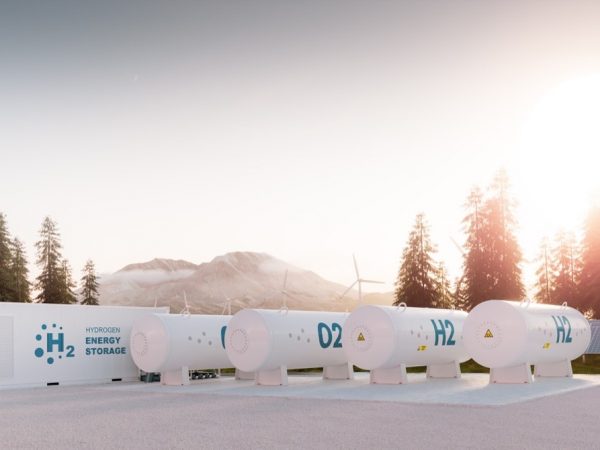French giant Engie is moving forward with its hydrogen plans. Its Chilean unit has filed an environmental impact assessment request for a green hydrogen industrial pilot project in Antofagasta. “The project, called HyEx – Green Hydrogen Production, considers the production of green hydrogen (26 MW) based on a water electrolysis system powered by renewable energy, whose operation is expected to start in 2025,” the company said in a statement, adding that the green hydrogen would be delivered to Enaex for the production of ammonia, an essential element for the blasting process in mining. “In the long term, and once the pilot plan is positively executed, the implementation of a large scale project would be considered, also in the Antofagasta Region, with a capacity of up to 2,000 MW of electrolysis, from which Enaex would increase its production of green ammonia, with an estimated date for the year 2030.”
The C&T trading division of Korean industrial conglomerate Samsung signed a memorandum of understanding on Friday with Namhae Chemical and Korea Southern Power (Kospo) to import and use clean hydrogen and clean ammonia. “Based on the trading company's global network and overseas business capabilities, Samsung C&T is responsible for developing an overall business model from the development of overseas clean hydrogen production projects to introduction and utilization in Korea,” reads the press release. Namhae Chemical will provide supply infrastructure such as ammonia storage tanks to carry out clean ammonia transport, conversion, and utilization demonstration projects. Korea Southern Power will provide the existing power generation infrastructure.
South Korea's Hyundai Motor Group announced it would host next week a global virtual forum to present the group’s plans for a new wave of hydrogen-based products and technologies. “The group will present its vision of a future hydrogen society by unveiling its exciting plans and business strategies for new hydrogen mobility technology, next-generation fuel cell systems and applications to diverse industries beyond automotive,” reads the release issued by the Seoul-based company. Hyundai’s latest fuel cell electric vehicles will be unveiled during the forum.
The Indian government is proposing to mandate using green hydrogen in fertilizer and refining. “This is part of the government’s commitment towards replacing grey hydrogen with green hydrogen,” said power minister Shri Singh in a call on Thursday with John Kerry, US special presidential envoy for climate. Singh informed Kerry of the launch of the National Hydrogen Energy Mission, whose aim is to enable cost-competitive green hydrogen production. “He added that India would be conducting competitive bids for green hydrogen in the next three to four months to pave the road for viable usage of hydrogen as a fuel,” the ministry said in a statement. “India is looking at bids for 4000 MW of electrolyzers capacity. The other countries need to come up with more electrolyzer plants to bring down the costs.”
Japanese automotive manufacturer Toyota said on Wednesday that it would begin assembling integrated dual fuel cell (FC) modules in the United States. FC modules will be destined for use in hydrogen-powered, heavy-duty commercial trucks, starting in 2023. This launch should mark the switch from prototypes to actual production. “This second-generation fuel cell system is necessary for a carbon neutral future,” said David Rosier, Toyota Kentucky powertrain head. “It delivers over 300 miles of range at a full load weight of 80,000 lbs., all while demonstrating exceptional drivability, quiet operation and zero harmful emissions.” The dual fuel cell modules, a key component of an overall FC kit, weigh approximately 1,400 pounds (635 kg) and can deliver up to 160 kW of continuous power. The FC kit includes a high voltage battery, electric motors, transmission and hydrogen storage assembly. “Heavy-duty truck manufacturers will be able to buy a fully integrated and validated fuel cell electric drive system, allowing them to offer their customers an emissions-free option in the Class 8 heavy-duty segment,” commented Tetsuo Ogawa, Toyota Motor North America's president and CEO.
Popular content
Germany’s Federal Research Minister Anja Karliczek and Director General Obeth Kandjoze of Namibia’s National Planning Commission have agreed to establish a hydrogen partnership. The two countries signed a joint communiqué of intent (JCoI) on Wednesday. Germany, the first country to set up a joint hydrogen plan with Namibia, will provide up to €40 million. “Namibia … has a lot of vast unused space. High wind speeds in Namibia mean that the generation of wind power is particularly profitable. Solar power harbours an even greater potential thanks to over 3,500 hours of sunshine per year. This is almost twice as much as Germany has to offer. We therefore think that one kilogramme of hydrogen from Namibia will eventually cost between €1.50 and €2.00. This would be the most competitive price in the world,” said Karliczek. The agreement is part of Germany’s €9 billion national hydrogen strategy. Namibia is particularly susceptible to climate change. “Two thirds of our existing installed generation capacity relies on hydroelectricity, which in turn relies on rain and the flowing rivers at Ruacana. … Prolonged droughts such as the one we recently experienced are a harbinger of catastrophic news for many of our fellow citizens,” said Kandjoze.
This content is protected by copyright and may not be reused. If you want to cooperate with us and would like to reuse some of our content, please contact: editors@pv-magazine.com.


PV magazine is an excellent source of knowledge on Renewable Energy and pV .It’s in depth coverage of business in the areas of Renewable energy is commendable.
It is a great resource for Renewal energy solutions.